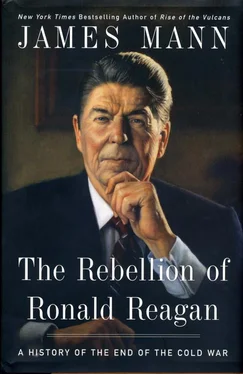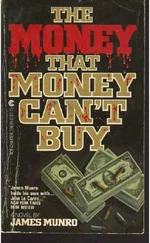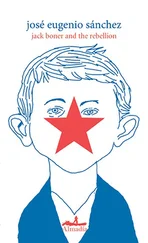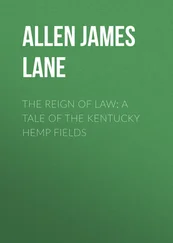Reagan’s determination to do business with Gorbachev thus demands other explanations beyond Iran-Contra. One is that Reagan and Secretary of State George Shultz had more firsthand contact with the new Soviet leadership than other Americans. They were dealing directly with Gorbachev and his foreign minister, Eduard Shevardnadze, and this put them in a better position to sense Gorbachev’s eagerness, indeed growing desperation, for a deal with the United States that might limit Soviet military expenditures and free resources for the failing Soviet economy. Gates and others at the CIA were able to scrutinize all the objective signs of change, or lack of change, in the Soviet Union, yet from the distance of Washington, it was not easy for them to judge Gorbachev’s intentions or state of mind.
Even those who were able to meet with Gorbachev a single time, like Nixon, tended to view him through the prism of the Cold War, with all its stale imagery of velvet gloves and steel fists. Reagan and Shultz, meeting Gorbachev more than once, were able to intuit, however imperfectly, that these clichés didn’t fit. Fritz Ermarth, who succeeded Matlock as the Soviet specialist at the National Security Council, was deeply suspicious of Gorbachev’s intentions at the time. Many years later, he reflected on why he had been wrong and Reagan and Shultz more accurate. “A lot of Gorbachev’s revolutionary potential—not just his avowed purposes, but these areas of naiveté—were revealed in these one-on-one meetings,” Ermarth said. General William Odom, the army intelligence official who served as director of the National Security Agency from 1985 to 1988, said two decades later that he felt he, too, had underestimated Reagan during this period. “Reagan grasped what Gorbachev was trying to do, and he wanted him to do as much of it as possible,” said Odom. 4
Reagan’s views and behavior cannot be explained entirely as an outgrowth of his direct contact with Gorbachev. He was also following through on ideas and policies he had begun to articulate in his first term, well before Gorbachev had become the Soviet leader. Those ideas included a desire to talk to the Soviet leadership even while seeking far-reaching change in the Soviet political and economic systems. Both of these goals had been enshrined in NSDD-75, the policy directive that set forth the Reagan administration’s underlying approach toward the Soviet Union; the document had been approved a few weeks before Reagan’s “evil empire” speech.
The hawks who championed tough policies toward the Soviets discovered that Reagan, while supportive, also broke into high-level discussions to emphasize the importance of compromise and diplomacy. Conservatives who were heartened by Reagan’s rhetoric and his defense buildup either missed or intentionally overlooked this aspect of Reagan. For their own part, liberals tended to overlook or to dismiss Reagan’s talk about abolishing nuclear weapons. This strand of Reagan’s thinking, too, could be found in his speeches even before Gorbachev’s rise to power. It was considerably more significant than anyone appreciated at the time.
Beyond these other factors, there was the most important difference of all between Reagan on the one hand and critics like Nixon on the other: a disagreement about the nature of the Cold War. Nixon’s view of the Cold War as a geopolitical contest, with each side able to annihilate the other, implied that neither side could ever win. For Reagan, however, America’s contest with the Soviet Union was about economic systems and ideals. When the Cold War was viewed in this fashion, it was conceivable to imagine that one side might fail and end up on “the ash heap of history.”
Gorbachev’s ascent to the job of Soviet leader brought these underlying differences to the surface. The early characterizations of Gorbachev in the West focused on his appearance and style: telegenic and charismatic, confident and poised. To Nixon, such traits were inherently suspect, and it was only a small logical step for him to begin portraying Gorbachev’s ascent to preeminence as merely a superficial change covering up an underlying continuity. But to Reagan, the career actor, Gorbachev’s public-relations skills were no defect.
As it became clear that the new Soviet leader was pressing for domestic reforms, skeptics such as Nixon and Kissinger at first worried, wrongly, that Gorbachev might be attempting to reassert Soviet military power and an aggressive foreign policy. By contrast, Reagan became ever more eager for a deal with Gorbachev, sensing that the United States could get good terms, and at the same time, give Gorbachev some of the help he needed to keep pushing for domestic reform inside the Soviet Union—a change in the Soviet system that had always interested Reagan more than Nixon.
Nixon and Reagan were contemporaries. They had been, since the 1940s, America’s most prominent and most successful anti-Communist politicians. Yet by the 1980s, they had different perspectives and policy prescriptions. One of them, Nixon, instinctively viewed events in the Soviet Union as a continuation of the past. The other, Reagan, searched for fundamental changes.
In forming his perceptions of the Soviet Union, Ronald Reagan had a friend—a well-dressed, attractive, Russian-speaking, fifty-year-old woman whose ideas about what was happening in Moscow and Leningrad made a bigger impression upon the president of the United States than the reporting and analysis of the Central Intelligence Agency. Her name was Suzanne Massie. She was a writer and author, not an established Soviet scholar. She first met the president on January 17, 1984, when National Security Adviser Robert C. McFarlane brought her into the Oval Office to give Reagan a report on a recent visit to the Soviet Union. They hit it off immediately. 1
The setting was hardly intimate. Reagan was flanked by several other senior officials, including McFarlane, Vice President George Bush, and Reagan’s three top White House aides: Michael Deaver, James Baker, and Edwin Meese. Nevertheless, as Massie proceeded to describe the mood in Moscow, she focused directly on the president as though he were the only person in the room. Whatever she did worked. Reagan was by nature so remote and impersonal that even distinguished visitors sometimes left wondering if he knew their names—and yet on this occasion, Reagan forged some sort of bond with Massie. He invited her to return to the White House after her next trip to Moscow, and she came back again and again and again. The records of the president’s appointments show that Massie met Reagan at the White House roughly twenty times during the following years, more often than any Soviet expert or indeed anyone else outside his own immediate subordinates. Sometimes, Reagan was joined in these sessions by top-level officials, such as his national security adviser. Sometimes, the advisers weren’t invited. Asked many years later whether he had taken part in Reagan’s White House meetings with Massie, Donald Regan, the White House chief of staff from 1985 to 1987, replied, “No, that was always private, and usually upstairs in the family quarters.” 2
Massie and Reagan began to send each other letters that were mostly about the Soviet Union but occasionally veered toward the personal. “How do you do it, Superman?” Massie asked in a letter in the summer of 1985, after Reagan had returned to the White House from surgery for a polyp in his colon. She sent Reagan little notes on his birthday. Reagan reciprocated. When Massie became a grandmother, the president not only congratulated her but wrote out a separate note addressed to the grandson, Samuel Robert Massie, that began, “Welcome! Your arrival in this exciting and challenging world is a cause for joy far greater than you can know right now….” Reagan’s White House aides began to describe Massie in their memos to one another as a personal favorite of Reagan’s. Asking that some time be set aside for Massie on Reagan’s schedule, one aide wrote to another: “This is important to the President—he likes Suzanne very much.” 3
Читать дальше












